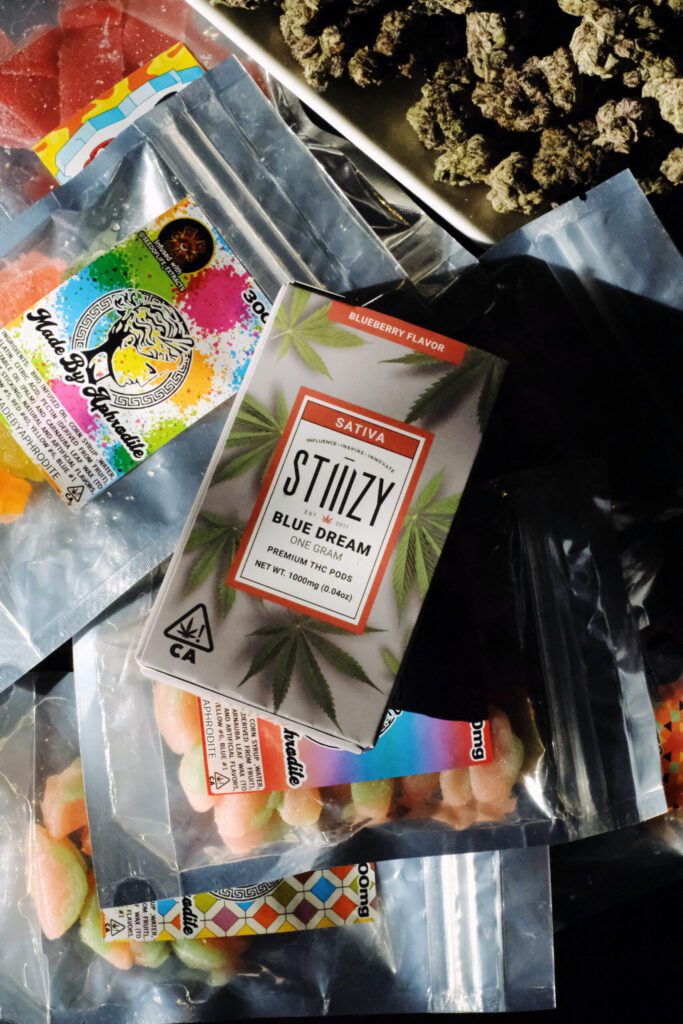Is Kava The Same As Kratom? Core Differences
Discover amazing products designed just for you.
Featured Products
No products found for the provided IDs.
What Is Kava? Benefits, Uses, And How It Works
Kava is a natural plant extract derived from the roots of the kava plant, scientifically known as Piper methysticum. Originating from the South Pacific, kava has been traditionally used for centuries in cultural and social rituals due to its calming effects. It’s now gaining popularity worldwide as a potential natural remedy for anxiety and stress.
Benefits Of Kava
Kava offers several potential benefits, making it an attractive option for those seeking natural wellness solutions. Primarily, its most well-documented benefit is its ability to promote relaxation and reduce stress without impairing cognitive function.1
It can help alleviate symptoms of anxiety, and some studies suggest that it may improve sleep quality by inducing a state of calmness before bedtime.2 Moreover, kava’s muscle-relaxant properties may benefit individuals experiencing tension-related physical discomfort.1
Uses Of Kava
Kava is available in various forms, including powders, capsules, and extracts, allowing users to choose the most convenient method of consumption. Traditionally prepared drinks remain popular, especially in cultural gatherings, as they offer a communal experience while providing the desired relaxing effects. Various commercial products now incorporate kava as an ingredient, expanding its uses and accessibility to a broader audience interested in natural wellness alternatives.
How Kava Works
The efficacy of kava is attributed to its active compounds known as kavalactones. These components interact with the brain’s neurotransmitter systems, particularly GABA receptors,3 which are pivotal in regulating fear and anxiety. By enhancing GABA transmission, kavalactones help diminish nerve activity, leading to a calming effect. When used responsibly and in moderation, kava can be an effective alternative for managing tension and stress, promoting an overall sense of well-being.
What Is Kratom? Benefits, Uses, And How It Works
Kratom, derived from the leaves of the Mitragyna speciosa tree native to Southeast Asia, is steadily gaining popularity for its unique effects. It’s primarily known for delivering alkaloids such as mitragynine and 7-hydroxymitragynine, which interact with opioid receptors in the brain.4 This interaction is believed to result in pain-relieving, stimulant, and sedative effects, though these effects can vary significantly depending on the dosage.
Benefits of Kratom
Kratom has been traditionally used for a variety of purposes by indigenous cultures. In the Western world, it is often explored for its potential benefits, including:
- Pain Relief: Studies suggest that the alkaloids in kratom may help alleviate both chronic and acute pain by interacting with the body’s pain receptors.5
- Mood Enhancement: Many users report feeling more upbeat and relaxed after consuming kratom, making it popular for those experiencing stress or anxiety.6
- Increased Energy: Lower doses of kratom are often used to boost energy levels and improve focus due to its stimulant-like properties.
Uses Of Kratom
Kratom is available in several forms, including raw leaves, powders, capsules, and extracts. This allows users to select the best method for their needs and lifestyle. It’s crucial to note that the effects of kratom can vary widely, so starting with a small dosage is recommended for first-time users to gauge their body’s reaction.
How Kratom Works
The primary active compounds in kratom, mitragynine, and 7-hydroxymitragynine, bind to the brain’s opioid receptors. This binding activity suggests why kratom can produce effects ranging from sedation to stimulation depending on the amount consumed. The body may process smaller doses of kratom as an energy booster, while larger doses might be more sedative.
Similarities Between Kava And Kratom
Kava and kratom, while distinct plants with different chemical profiles, share some overlapping areas in their traditional and sometimes modern uses. It’s important to note that while these similarities exist, their effects and potential risks are also significantly different. Here’s a breakdown of the key similarities:
- Traditional Use For Mood And Relaxation: Both kava and kratom have been traditionally used in their native cultures for their potential to influence mood and promote relaxation. Kava is well-known for its calming effects, often used to reduce anxiety and stress. Kratom, depending on the dose and strain, can also have relaxing effects, though it can also be stimulating. This overlap in traditional use for mood regulation is a key similarity.
- Use For Pain Relief: Both plants have a history of traditional use for managing pain. Kava has been used for muscle relaxation and to ease tension, which can contribute to pain relief. Kratom’s alkaloids interact with opioid receptors, giving it potential analgesic properties. However, it’s crucial to understand that neither should be considered a replacement for conventional pain management, and their long-term use for pain should be discussed with a healthcare professional.
- Plant-Based Origins: Both kava and kratom are derived from plants. Kava comes from the root of the kava plant (Piper methysticum), while kratom is derived from the leaves of the kratom tree (Mitragyna speciosa). This shared plant origin is a basic similarity.
- Availability In Similar Forms: While traditionally consumed in different ways (kava as a drink, kratom often chewed or brewed), both are now available in similar forms in some markets, such as capsules, powders, and extracts. This doesn’t mean their effects are the same, but they are similar in how they are often sold.
- Potential For Interaction With Medications: Both kava and kratom have the potential to interact with certain medications. This is a crucial similarity, and it highlights the importance of consulting with a healthcare professional before using either substance, especially if you are taking other medications.
Key Differences Between Kava And Kratom
Understanding the key differences between kava and kratom is essential for anyone considering these botanical supplements as part of their wellness routine. Although these two plants are often grouped together due to their similar applications in alternative wellness, they possess distinct properties and effects that are important to distinguish.
Origin And Source
Kava is derived from the root of the Piper methysticum plant, which is traditionally grown in the South Pacific islands. It has been used for centuries in social and ceremonial settings for its calming effects. Kratom, conversely, comes from the leaves of Mitragyna speciosa, a tree native to Southeast Asia. It has a long history of use as a traditional medicine and stimulant by local indigenous populations.
Chemical Composition
The active compounds in kava are called kavalactones, which are responsible for its sedative and anxiolytic properties. In contrast, kratom contains alkaloids like mitragynine and 7-hydroxymitragynine. These alkaloids interact with opioid receptors in the brain, potentially producing effects that range from stimulation to pain relief.
Effects And Uses
Kava is primarily recognized for promoting relaxation and reducing anxiety without significantly altering mental clarity. It is often preferred for stress relief and improving sleep quality. Kratom’s effects can vary widely depending on the dosage; lower doses typically act as a stimulant, while higher doses may provide pain relief and sedative effects. This variability can offer versatile uses but also requires careful dosing.
Legal Status
While both kava and kratom are available as dietary supplements, their legal status can differ significantly by region. Kava generally enjoys broader acceptance, while kratom faces more legal scrutiny and regulation due to concerns over its safety profile and potential for misuse.
Safety And Side Effects
Kava has an established safety record when taken in appropriate amounts, though long-term use may occasionally affect liver health. Kratom, being relatively new to Western markets, presents more complex safety considerations. It has been associated with dependency and various health concerns.
Which One Is Safer? The Risks And Side Effects Of Kava And Kratom
Kava and kratom, while both derived from plants and used for their potential effects on mood and relaxation, have different safety profiles and potential risks. Here’s a breakdown of their risks and side effects to help you understand which might be safer:
Kava
- Potential Risks: Kava can interact with certain medications, including those metabolized by the liver. This can lead to increased side effects or reduced effectiveness of the medication. Less common side effects include digestive issues, skin rashes, headaches, and dizziness.
- Side Effects: Mild sedation and drowsiness, muscle relaxation, reduced anxiety, and the potential for mouth ulcers with prolonged use.
Kratom
- Potential Risks: Kratom’s interaction with opioid receptors carries a significant risk of dependence and withdrawal symptoms, similar to opioids. Regular use can lead to tolerance, requiring higher doses for the same effect. Kratom withdrawal can be unpleasant, with symptoms like anxiety, insomnia, muscle aches, runny nose, and diarrhea. High doses of kratom can lead to serious side effects, including respiratory depression, seizures, and even death in rare cases. Kratom can interact with various medications, including antidepressants, stimulants, and opioids. Common side effects include nausea, vomiting, constipation, dizziness, drowsiness, and dry mouth.
- Side Effects: At low doses, they may include increased energy, alertness, and focus. At higher doses, they may include sedation, pain relief, and euphoria.
Which Is Safer?
Generally, kava is considered safer than kratom when used responsibly and in moderation. However, both substances have potential risks, and neither is without potential side effects.
How To Choose The Right One: Kava Vs. Kratom For Your Needs
Choosing between kava and kratom requires understanding the unique properties and potential effects of each. Both are natural substances used for varying purposes, yet they differ significantly in their composition and impact on wellness.
Understanding Kava
Kava, derived from the roots of the Piper methysticum plant, is known for its soothing effects. Traditionally consumed in Pacific Island cultures, kava promotes relaxation and is often used to manage stress or anxiety. Its effects are mainly calming without impairing cognitive function. If your wellness goals focus on relaxation or stress relief, kava might suit you.
Exploring Kratom
Kratom comes from the leaves of the Mitragyna speciosa tree, which is native to Southeast Asia. Unlike kava, kratom’s effects vary widely, depending on the strain and dosage. Kratom may offer stimulating or sedative effects and is sometimes used for pain management or increasing energy levels. If you seek a product that can provide either energizing effects or support in pain management, kratom may align better with your needs.
Factors To Consider
- Intended Effects: Consider whether you’re looking for relaxation (kava) or more variable effects ranging from stimulation to sedation (kratom).
- Usage History: Evaluate any previous experiences you might have had with either substance. This background can guide your decision.
- Health Conditions: Always consult healthcare professionals, especially if you have pre-existing conditions or are taking medications.
- Legal Status: Be aware of the legal status of both substances in your area, as they can vary by region.
Depending on your personal goals, both kava and kratom can fit into a holistic approach to wellness.
Read Also:
- Ethnobotanical Plants Legality: Laws And Guidelines
- Legality Of Natural Herbs Like Kratom: What To Know
- How Does Kratom Work? Effects And Mechanism
Sources:
- A.R. Bilia, S. Gallori, & F.F. Vincieri. (2002). Kava-kava and anxiety: Growing knowledge about the efficacy and safety. Life Sciences, 70(22). https://www.researchgate.net/publication/263608195_Kava-kava_and_anxiety_Growing_knowledge_about_the_efficacy_and_safety
- Bian, T., Corral, P., Wang, Y., Botello, J., Kingston, R., Daniels, T., Salloum, R. G., Johnston, E., Huo, Z., Lu, J., Liu, A. C., & Xing, C. (2020). Kava as a Clinical Nutrient: Promises and Challenges. Nutrients, 12(10). https://doi.org/10.3390/nu12103044
- Taibi, D. M., & Landis, C. R. (2009). Valerian and Other CAM Botanicals in Treatment of Sleep Disturbances. Elsevier EBooks, 57–81. https://doi.org/10.1016/b978-0-12-374228-5.00004-4
- Annuar, Ummi Kalthum Azlan, Mediani, A., Tong, X., Han, R., Ebtesam Al-Olayan, Syarul Nataqain Baharum, Hamidun Bunawan, Murni Nazira Sarian, Hamizah Shahirah Hamezah, & Ibrahim Jantan. (2024). An insight review on the neuropharmacological effects, mechanisms of action, pharmacokinetics and toxicity of mitragynine. Biomedicine & Pharmacotherapy, 171, 116134–116134. https://doi.org/10.1016/j.biopha.2024.116134
- Kruegel, A. C., Uprety, R., Grinnell, S. G., Langreck, C., Pekarskaya, E. A., Le Rouzic, V., Ansonoff, M., Gassaway, M. M., Pintar, J. E., Pasternak, G. W., Javitch, J. A., Majumdar, S., & Sames, D. (2019). 7-Hydroxymitragynine Is an Active Metabolite of Mitragynine and a Key Mediator of Its Analgesic Effects. ACS Central Science, 5(6), 992–1001. https://doi.org/10.1021/acscentsci.9b00141
Frequently Asked Questions About Is Kava The Same As Kratom?
Are kava and kratom the same?
While kava and kratom are often mentioned together, they are not the same. Both are natural plants used for their relaxing properties but come from different regions and have distinct chemical compositions and effects.
What are the origins of kava and kratom?
Kava originates from the South Pacific, where indigenous cultures have traditionally used it for ceremonial and social purposes. Kratom, on the other hand, is native to Southeast Asia and has been used for centuries in traditional medicine systems.
What are the active components in kava?
Kava’s effects are primarily due to kavalactones, which are active compounds known for their calming and anxiolytic properties. These components contribute to the beverage’s ability to promote relaxation and ease stress.
What are the active components in kratom?
Kratom contains alkaloids such as mitragynine and 7-hydroxymitragynine. These alkaloids interact with opioid receptors in the brain, which can produce effects ranging from stimulatory to sedative, depending on the dosage.
Is it safe to mix kava with other substances?
Mixing kava with other substances, especially alcohol or medications, can increase the risk of adverse effects. It’s essential to consult with a healthcare professional before combining kava with other substances to avoid potential interactions and side effects.
How do the methods of consumption differ for kava and kratom?
Kava is traditionally prepared as a beverage from the plant’s root, either through water extraction or powder form. Kratom is commonly consumed as a tea, capsule, or powder. The method of consumption can influence the effects and onset time for each substance.




































